Repairing a large hole in your ductwork is an essential task to maintain efficient airflow and energy efficiency in your home. Damaged ducts can lead to significant energy losses, increased utility bills, and uneven heating or cooling throughout your living space. Addressing these issues promptly ensures that your HVAC system operates at optimal performance. Whether you’re a DIY enthusiast or just looking to understand the process, this guide will provide you with how to repair large hole in ductwork.
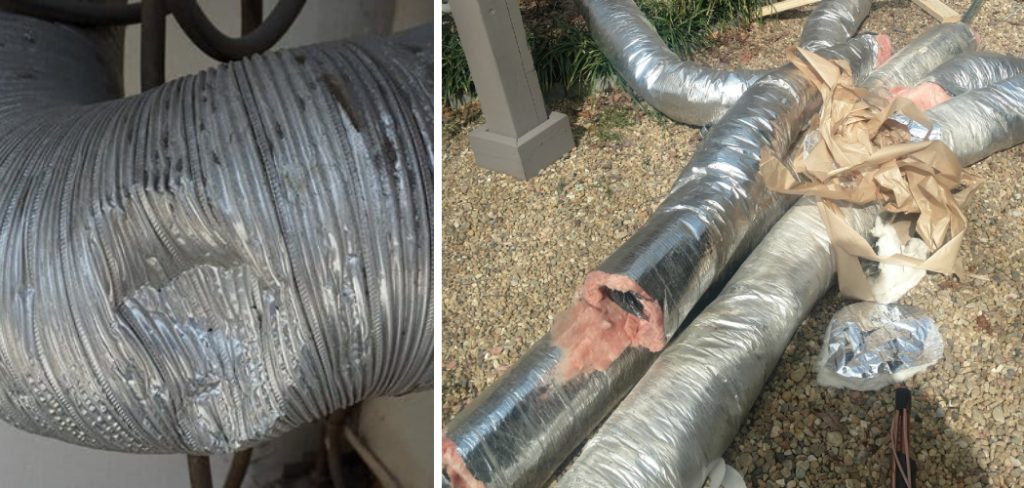
Importance of Maintaining Duct Integrity
Maintaining the integrity of your ductwork is crucial for the overall health and efficiency of your home’s heating, ventilation, and air conditioning (HVAC) system. When ducts are compromised, they can leak conditioned air into unconditioned spaces, dramatically reducing the system’s efficiency and increasing energy consumption. This not only inflates utility bills but also puts additional strain on the HVAC components, which can lead to premature wear and costly repairs.
Moreover, damaged ducts can affect indoor air quality by allowing dust, allergens, and pollutants to enter your living spaces. By ensuring that your ductwork is in good condition, you can optimize your HVAC performance, save on energy costs, and maintain a healthier indoor environment. Regular inspections and prompt repairs are key to preserving duct integrity and ensuring comfortable and efficient home heating and cooling.
Understanding Ductwork Damage
Ductwork damage can result from a variety of causes, and identifying the source of the problem is the first step in the repair process. Physical damage is often due to improper installation, aging materials, or external forces such as construction activities. Over time, duct materials can also degrade, leading to cracks or tears. In addition to physical damage, environmental factors, such as moisture, pests, or mold growth, can contribute to duct deterioration.
Moisture, in particular, can cause rust and corrosion in metal ducts, weakening their structure. Pests, such as rodents, might chew through duct material, creating holes or gaps. Moreover, mold growth can occur in the presence of moisture and organic materials, posing health risks and potentially damaging the ductwork. By understanding the different types of damage your duct system might encounter, you can take appropriate preventive measures and address issues quickly to maintain the overall integrity and functionality of your HVAC system. Regular maintenance checks can help catch problems early and ensure that your ductwork remains in optimal condition.
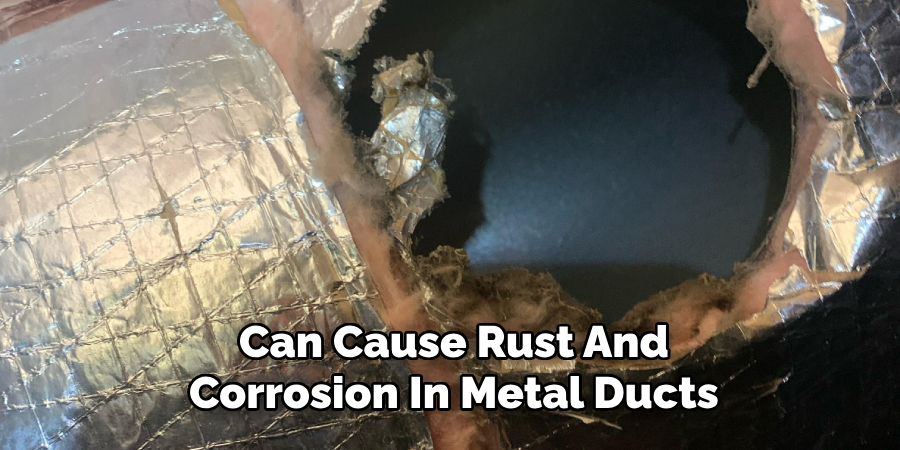
10 Methods How to Repair Large Hole in Ductwork
1. Assess the Damage
Before beginning any repairs, the first step is to assess the extent of the damage. Inspect the ductwork thoroughly to determine the size and location of the hole. Use a flashlight to illuminate dark areas and look for signs of wear, corrosion, or previous repairs. Understanding the specific nature of the hole will inform your choice of repair method. Documenting the condition of the ductwork will also help you track any future maintenance needs.
2. Turn Off the HVAC System
Safety is paramount when working on ductwork. Before starting any repairs, ensure that the HVAC system is turned off to prevent air from blowing through the ducts while you work. Disconnect power to the system at the circuit breaker to eliminate the risk of electrical hazards. This precaution will also help prevent any debris from being blown into the system during the repair process, ensuring a cleaner working environment.
3. Clean the Area Around the Hole
To ensure a secure repair, it’s essential to clean the area surrounding the hole thoroughly. Use a damp cloth or sponge to remove dust, debris, and any loose particles. If the ductwork is greasy or dirty, consider using a mild detergent to clean it effectively. A clean surface will allow for better adhesion of repair materials, whether you’re using tape, patches, or sealants. Ensuring that the area is dry is equally important, as moisture can hinder the effectiveness of the repair.
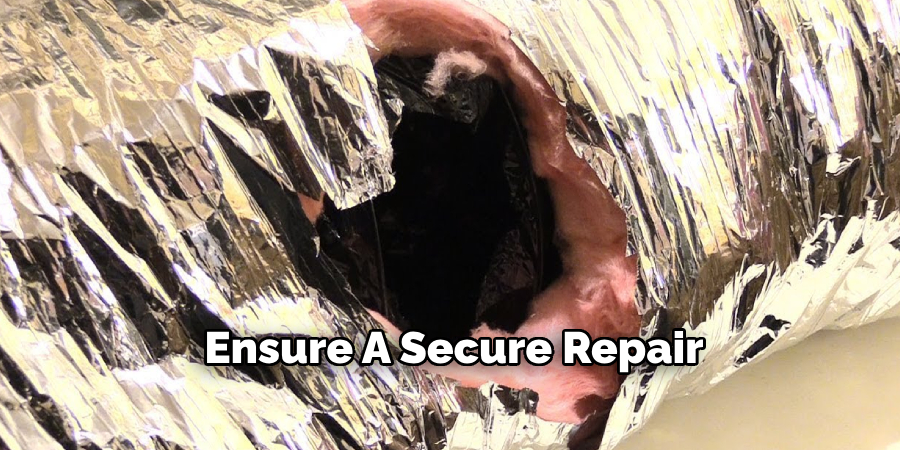
4. Use Duct Tape for Temporary Repairs
For a quick and temporary fix, high-quality duct tape can be an effective solution. While not a permanent repair method, it can help minimize air leakage until you can implement a more durable fix. Cut a piece of duct tape large enough to cover the hole, extending at least an inch beyond the edges. Press it firmly onto the duct surface, smoothing out any wrinkles or bubbles. While this method is quick, it’s important to remember that duct tape may not withstand high temperatures for extended periods, so follow up with a more permanent solution as soon as possible.
5. Apply Duct Sealant for Small to Medium Holes
For holes that are larger than what tape can adequately cover, consider using duct sealant, also known as mastic. This flexible material is ideal for sealing gaps and holes in ductwork, providing a durable and long-lasting repair. To apply, use a putty knife to spread the sealant evenly over the hole, ensuring that it fills the void completely. Feather the edges to create a smooth transition between the ductwork and the sealant. Allow the sealant to cure according to the manufacturer’s instructions, ensuring a robust bond that prevents air leaks.
6. Install a Duct Patch for Large Holes
For particularly large holes that cannot be effectively sealed with tape or sealant, installing a duct patch is a reliable solution. Begin by cutting a piece of metal flashing or sheet metal that is slightly larger than the hole. Place the patch over the hole and secure it in place using sheet metal screws, ensuring that the screws are spaced evenly around the perimeter of the patch. Once the patch is secure, apply duct sealant around the edges to ensure a tight seal. This method not only repairs the hole but also reinforces the ductwork for long-term durability.
7. Consider Using Duct Repair Tape
If you prefer a more robust solution than standard duct tape, consider using specialized duct repair tape. This type of tape is designed specifically for HVAC applications and provides a stronger bond and better resistance to temperature fluctuations. Clean the area around the hole, then cut a piece of repair tape large enough to cover the damaged area. Press the tape firmly into place, ensuring there are no gaps or air bubbles. This method can offer a more durable solution for moderate-sized holes while being quick and easy to apply.
8. Utilize a Fabric Patch for Flexible Ducts
If the ductwork is made from flexible material, such as vinyl or fiberglass, using a fabric patch can be an effective solution. Start by cutting a piece of durable fabric, like heavy-duty canvas or an old towel, that is larger than the hole. Apply a layer of duct sealant around the hole, then press the fabric patch into place. Once secured, apply an additional layer of sealant over the patch and allow it to cure. This method provides flexibility and can adapt to the movement of flexible ductwork while ensuring a solid seal.
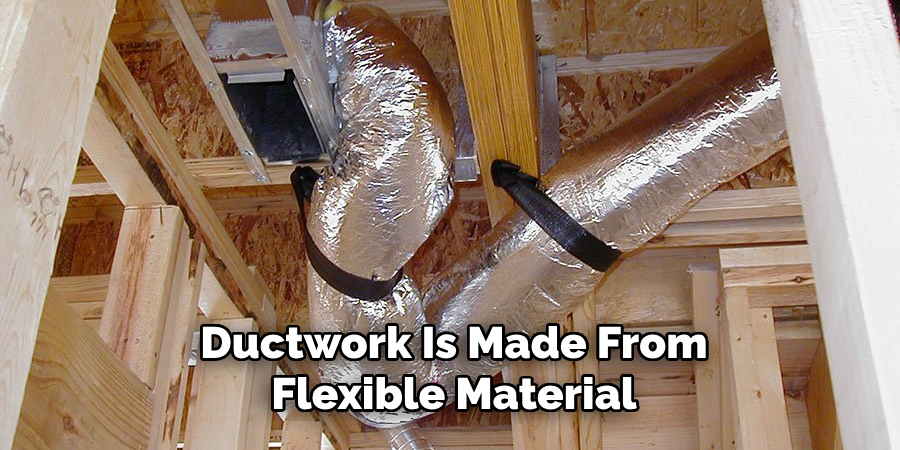
9. Replace Damaged Sections of Ductwork
In cases where the damage is extensive or the ductwork is old and deteriorating, replacing the affected section may be the most effective long-term solution. Begin by cutting out the damaged section using tin snips or a utility knife. Measure and cut a new piece of ductwork to fit the gap, ensuring that it is compatible with the existing duct system. Secure the new section in place using metal screws or connectors and apply duct sealant around the joints to prevent air leakage. This method provides a fresh start and ensures that the ductwork is in optimal condition.
10. Hire a Professional for Complex Repairs
If the damage is extensive or if you are uncomfortable performing the repairs yourself, consider hiring a professional HVAC technician. Professionals have the experience and tools necessary to assess and repair ductwork effectively. They can provide a comprehensive evaluation of your system, ensuring that all repairs are made to code and that the entire duct system is functioning efficiently. While hiring a professional may involve an upfront cost, the long-term benefits of a well-maintained system can far outweigh the expense.
Things to Consider When Choosing Repair Methods
When deciding on a method to repair ductwork, it’s crucial to take several factors into account to ensure an effective and lasting solution. First, assess the size and location of the damage. Small holes might be addressed with quick fixes like duct tape or sealant, while larger or more complex issues could necessitate the use of patches or even section replacements. Next, consider the material of the ductwork; rigid metal ducts may require different repair strategies compared to flexible duct materials. Additionally, evaluate the environmental conditions, such as temperature and humidity, as these can affect the durability of certain repair materials.
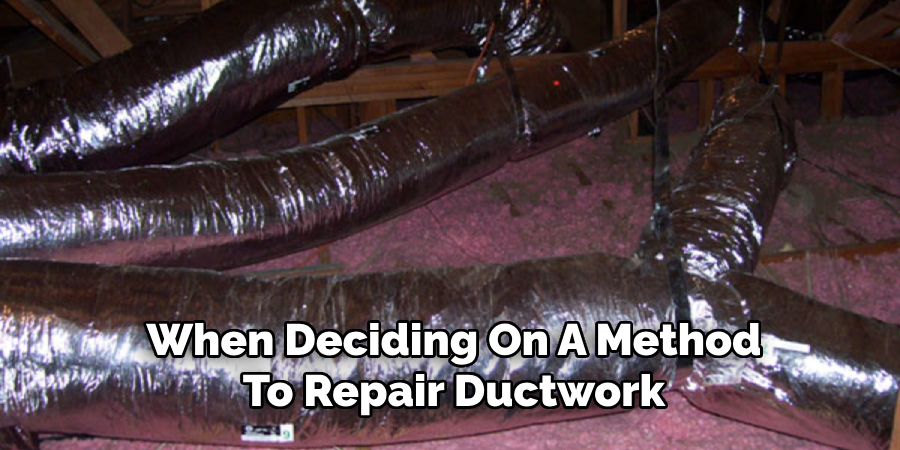
Conclusion
Repairing a large hole in ductwork is essential for maintaining the efficiency and effectiveness of your HVAC system. By following these ten methods, from assessing the damage and cleaning the area to using appropriate materials and considering professional help, you can effectively address ductwork issues. Regular maintenance and timely repairs are crucial for ensuring that your heating and cooling systems operate at their best, providing comfort and efficiency for your home. Thanks for reading our blog post on how to repair large hole in ductwork! We hope you found it helpful and informative.
you can also check it out How to Fix a Hot Tub Air Leak
